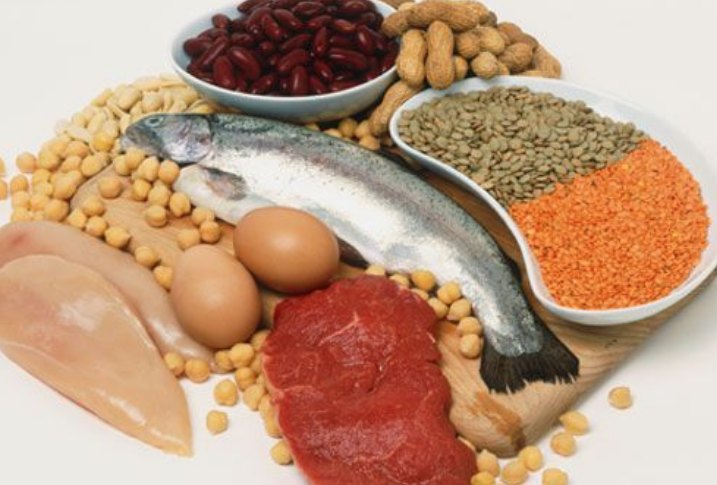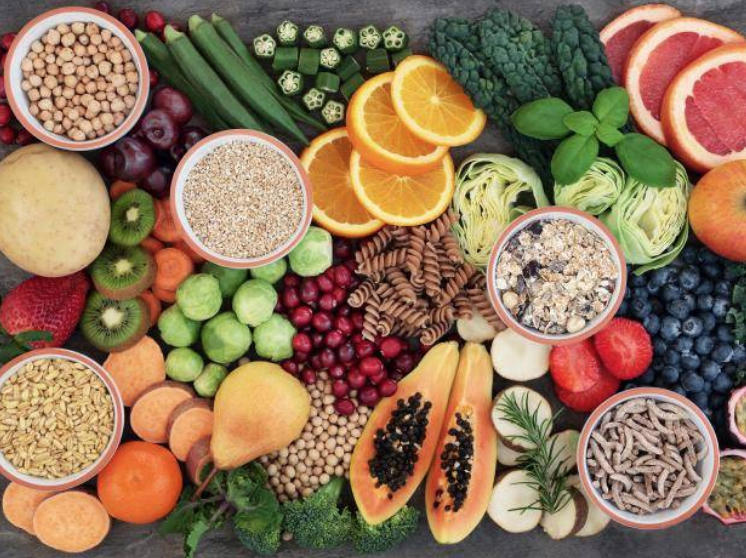
Nutrition: Ever wondered how the Cristiano Ronaldo’s, Usain Bolt’s and Laura Geitz’s of the world got their bodies to look like a work of art? Or it might simply just be how your friend who exercises exactly the same amount as you looks so much leaner and healthier than you do. Contrary to what many people are taught to believe, training and exercise isn’t everything when it comes to weight management and obtaining that perfect figure. Nutrition plays a key role. This is the secret to a perfect body composition.
The Synergy of Exercise and Nutrition for Optimal Body Composition
To perfect your body composition, you can’t just rely on exercise; you also need a balanced diet. A great physique boils down to lower body fat and higher lean muscle mass. Athletes and fitness enthusiasts typically achieve this through a well-balanced diet, a high metabolic rate, and a solid strength and conditioning program.
Boosting Metabolism: Where Exercise Fits In
Exercise doesn’t just check the box for physical activity; it also significantly boosts your metabolism. Various factors like genetics, age, gender, and body size affect your metabolic rate. Exercise plays a role by increasing your metabolism through its thermic effect—essentially, the energy you expend during physical activity. Exercise doesn’t just spike your metabolic rate during the activity. It also keeps your metabolism elevated for up to 24 hours afterward. This happens because your body needs extra energy for recovery and adaptation.
The Role of Diet in Metabolic Rate and Muscle Preservation
What you eat also matters. Your diet can boost your metabolism through thermogenesis—the energy your body uses for digestion, absorption, and storage of food. But timing and portion control are crucial.
A common mistake many people make when advised to “eat healthily” is to cut calories drastically. Doing so deprives your body of energy, leading it to consume muscle stores before burning fat. This is counterproductive because a higher muscle mass typically corresponds to a higher metabolic rate. When you reduce your muscle mass by restricting food, you slow down your metabolism and deplete your energy stores. This makes you more likely to eat more later on, causing faster weight gain than before.
Summary: The Balanced Approach to Achieving Ideal Body Composition
To summarize, perfecting your body composition demands a two-pronged approach. First, integrating a robust strength and conditioning program to improve metabolic rate. Secondly, adding a balanced diet to promote lean muscle mass. Adopting these key lifestyle changes will help you maintain a constant metabolic rate, crucial for fat loss. Detailed explanations on how to incorporate each macronutrient for optimal results will follow below.
Nutrition: (Macronutrients)
Protein

When people think protein, they often think strength and muscle gains. Strength and conditioning athletes tend to believe the more protein they consume in one sitting the better. Truth is you gain no extra benefit in muscle repair and growth eating 50 grams than you would having 20 grams. Research has shown that protein synthesis reaches its maximum rate when 20 grams is consumed in a single sitting. It is therefore recommended to spread protein intake across the day. Best having around 10-20 grams every 3 to 4 hours. Protein is not only essential for muscle repair and growth but it is a highly satiating food. It leaves you feeling fuller for longer and not contemplating going to the fridge every half an hour.
Carbohydrates

When looking to lose weight or build muscle it is common to want to cut down carbohydrates. This is a misunderstood phenomenon, as there are two types of carbohydrates, simple and complex. Simple carbohydrates are refined processed foods. Candies, sugars, and white breads or rice are bad as they cause energy spikes and are burnt up quickly. The problem with this is it causes you to feel hungry again very quickly so you eat more of them. It is these types of carbohydrates that we want to cut down. On the other hand complex carbohydrates are an essential part of the diet. Without them you will become fatigued and lacking energy. Complex carbohydrates provide energy to your brain and are required for you to reach your peak. These include foods such as fruits, wholegrains, and starchy vegetables that contain essential vitamins and minerals.
Fibre

Fibre is used interchangeably with carbohydrates. Is not only a necessity in the diet but great for improving body composition. This is due to the fact that it is an indigestible nutrient. Itiss not only high in satiety, but also keeps you regular and helps with eliminating waste from the body. Hence choosing the right types of carbs is essential to improve body composition. Eating complex carbohydrates with high fibre is the way to go.
Fats

Like carbs fat is important, however it is important to choose the right types of fats. It is unsurprisingly a common misconception that eating fat makes you fat, where in fact the saying should be, eating too many calories makes you fat. The key is to consume mostly unsaturated fats such as avocado, fish, nuts, and plant-based fats as opposed to trans and saturated fats, which are contained in processed foods and animal products. The problem with trans and saturated fats is that they raise bad cholesterol in your body, which clogs arteries and can lead to heart disease.
Exercise For Body Composition – Aerobic v’s HIIT

Now that you have an idea of nutrition, what about the type of exercise to go with it? If unfit or overweight and looking to lose weight is it recommended to train within the aerobic heart rate (HR) zone (50-70% of max HR). Exercise needs to be sustainable for at least 20-30 minutes and working at this intensity should be achievable for most people. Obviously energy is used at a higher rate at higher intensities, meaning benefits can be seen more quickly, however people just starting a weight loss or fitness program will not be able to maintain exercise for long enough to burn as much energy as training aerobically, and there is also a higher risk of injury or untoward event occurring with high intensity activity in unfit or untrained individuals.
Once fitness levels have improved it is recommended to perform higher intensity activities to improve body composition, as metabolism will be further enhanced post workout and fat will be burnt more efficiently than with aerobic training. Remember however that it is important to progress exercise intensity slowly and at a rate that is maintainable for the individual.
Finally, resistance training should also not be forgotten as it promotes building of lean muscle mass, which will raise the metabolic rate and effectively increase energy utilization. Compound exercises using large muscle groups are recommended over single muscle isolation exercises as a greater stimulus for energy expenditure is produced.
WHERE TO NOW?
So now hopefully you understand that in order to achieve that body composition you have always dreamed of isn’t actually impossible. It is just about making a couple of small lifestyle changes; firstly, to find and introduce a good strength and conditioning program, and secondly to enjoy a well-balanced healthy diet (nutrition).
If you found this article useful you may also enjoy reading Does Exercise Really Work?, Darn Well Jogging Around, or 12 Tips for Successful Sport Coaching. Learn more about nutrition by studying a Certificate III in Fitness, Certificate IV in Fitness or Diploma of Fitness. Fit Education also offers a Certificate in Nutrition.
